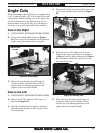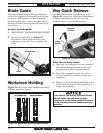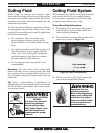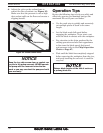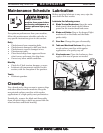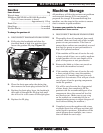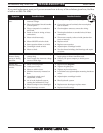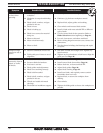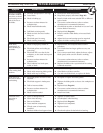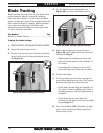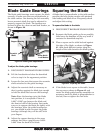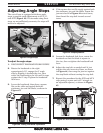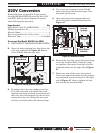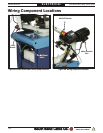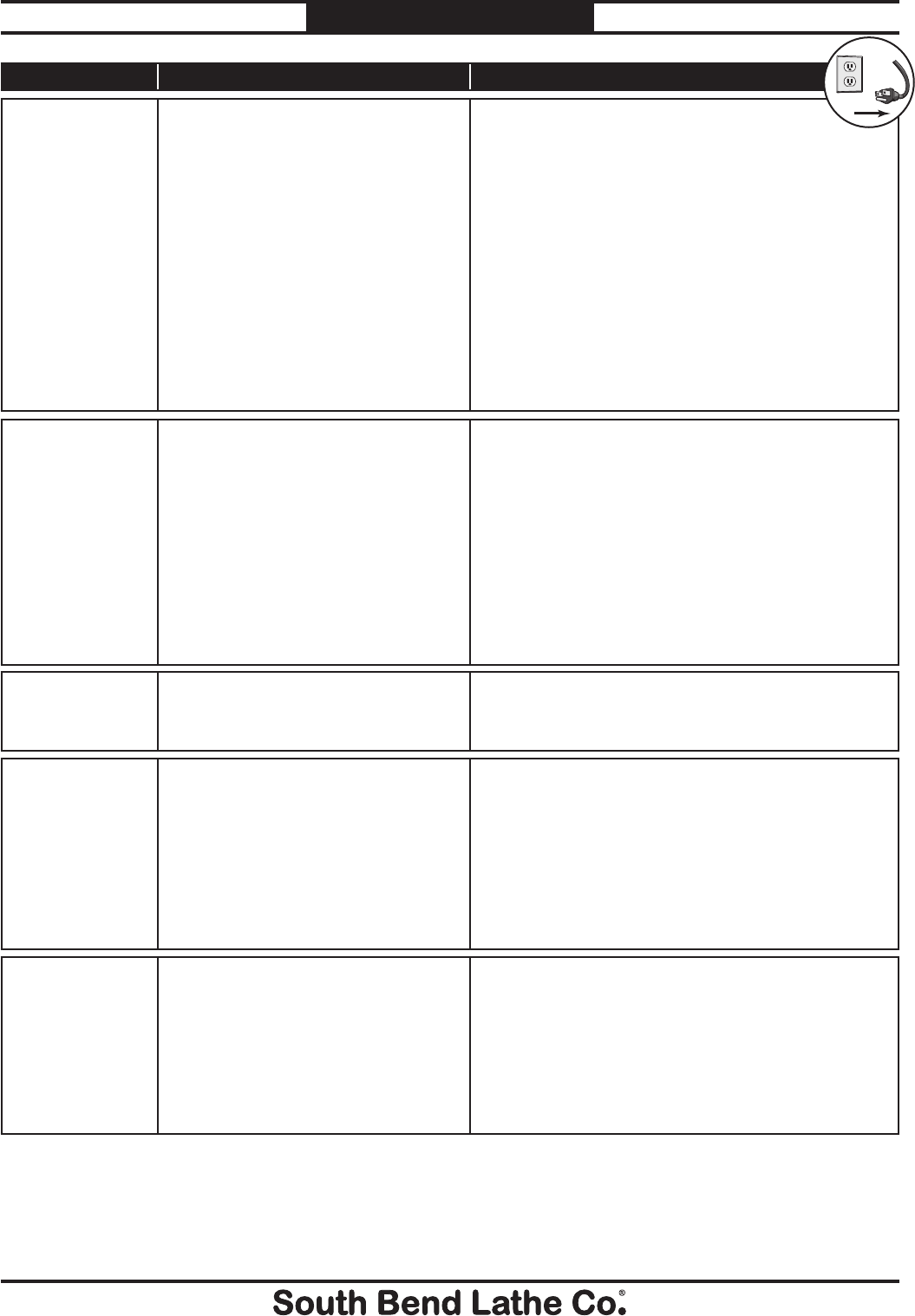
For Machines Mfg. Since 8/09 Model SB1019
-37-
TROUBLESHOOTING
The cut is crooked,
the blade wanders,
cuts slow, or shows
overheating on one
side of the cut or
the blade.
1.
The feed rate/pressure is too high.
1.
Decrease the feed rate/pressure.
2.
Loose blade.
2.
Keep blade properly tensioned (Page 25).
3.
Blade is loading up.
3.
Install a blade with more suitable TPI or different
style of teeth.
4.
Incorrect coolant mixture for
workpiece/cut.
4.
Use correct coolant mixture (refer to coolant
manufacturer's recommended mixture).
5.
Blade installed backwards.
5.
Check blade rotation as described in “test run” and
reverse blade if necessary.
6.
Dull blade; missing teeth.
6.
Replace blade (Page 24).
7.
Blade too wide for size of radius
being cut.
7.
Install a smaller width blade, or increase blade
tension.
8.
The blade speed is wrong.
8.
Adjust feed rate and cutting speed as required.
9.
Blade tracking incorrectly.
9.
Adjust the blade tracking back to normal.
Symptom Possible Cause Possible Solution
Blade dulls
prematurely, or
metal sticking to
the blade.
1.
Blade is improperly broken in.
1.
Replace blade, and complete blade break in
procedure.
2.
The blade gullets are loading up
with chips.
2.
Use a blade that has larger gullets to carry out
material.
3.
The blade TPI is too fine for the
workpiece, so the teeth load up and
overheat.
3.
Use a coarser-tooth blade, adjust feed rate, adjust
blade speed, make sure the brush is working.
4.
Incorrect coolant mixture for
workpiece/cut.
Use correct coolant mixture (refer to coolant
manufacturer's recommended mixture).
5.
The workpiece has hard spots,
welds, or scale.
5.
Replace the blade with a special blade for cutting
hardened materials.
Repetitive ticking
noise coming from
machine.
1.
Blade is missing teeth.
1.
Replace blade (Page 24).
2.
Blade weld contacting blade guides.
2.
Grind blade weld down smaller.
3.
Blade weld may be failing.
3.
Cut and reweld the blade, or replace the blade.
Blade wears on
one side or shows
overheating.
1.
The blade guides are worn or mis-
adjusted.
1.
Re-adjust or replace the blade guides.
2.
The blade support is inadequate.
2.
Tighten the blade guide as close to the workpiece as
possible.
3.
Dull or incorrect blade.
3.
Replace blade (Page 24).
4.
Incorrect coolant mixture for
workpiece/cut.
4.
Use correct coolant mixture (refer to coolant
manufacturer's recommended mixture).
5.
Blade is bell-mouthed.
5.
Install new blade.
Vibration when
operating or
cutting.
1.
Loose or damaged blade.
1.
Tighten or replace blade.
2.
Worn wheel bearing.
2.
Check/replace wheel bearing.
3.
Bent or dull blade.
3.
Replace blade (Page 24).
4.
Loose machine component.
4.
Tighten loose component.
5.
Wheels worn or incorrectly
installed.
5.
Replace wheels.
6
Bandsaw blade wheel appears bent.
6
Check and replace for bad wheel or bearing.
!



